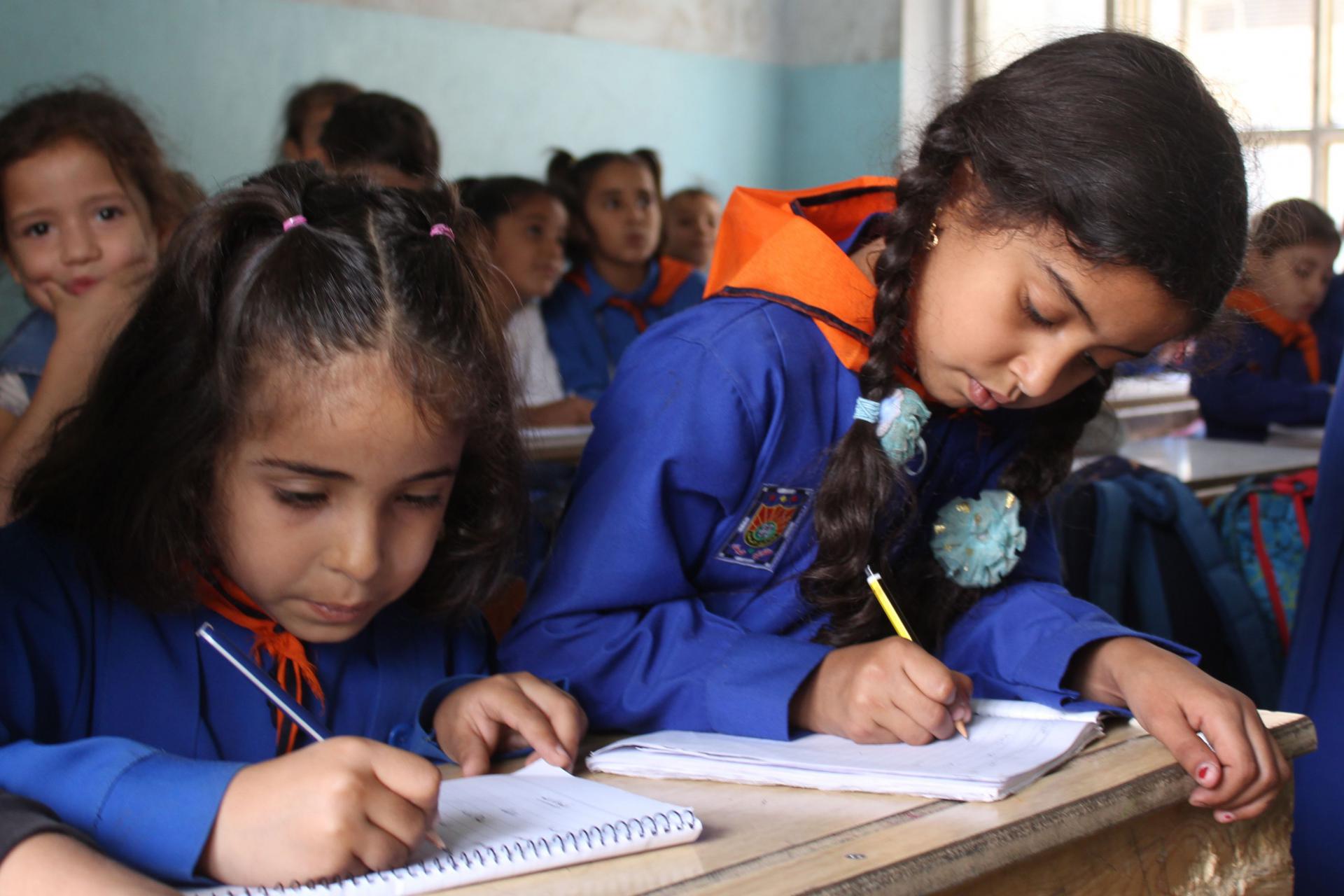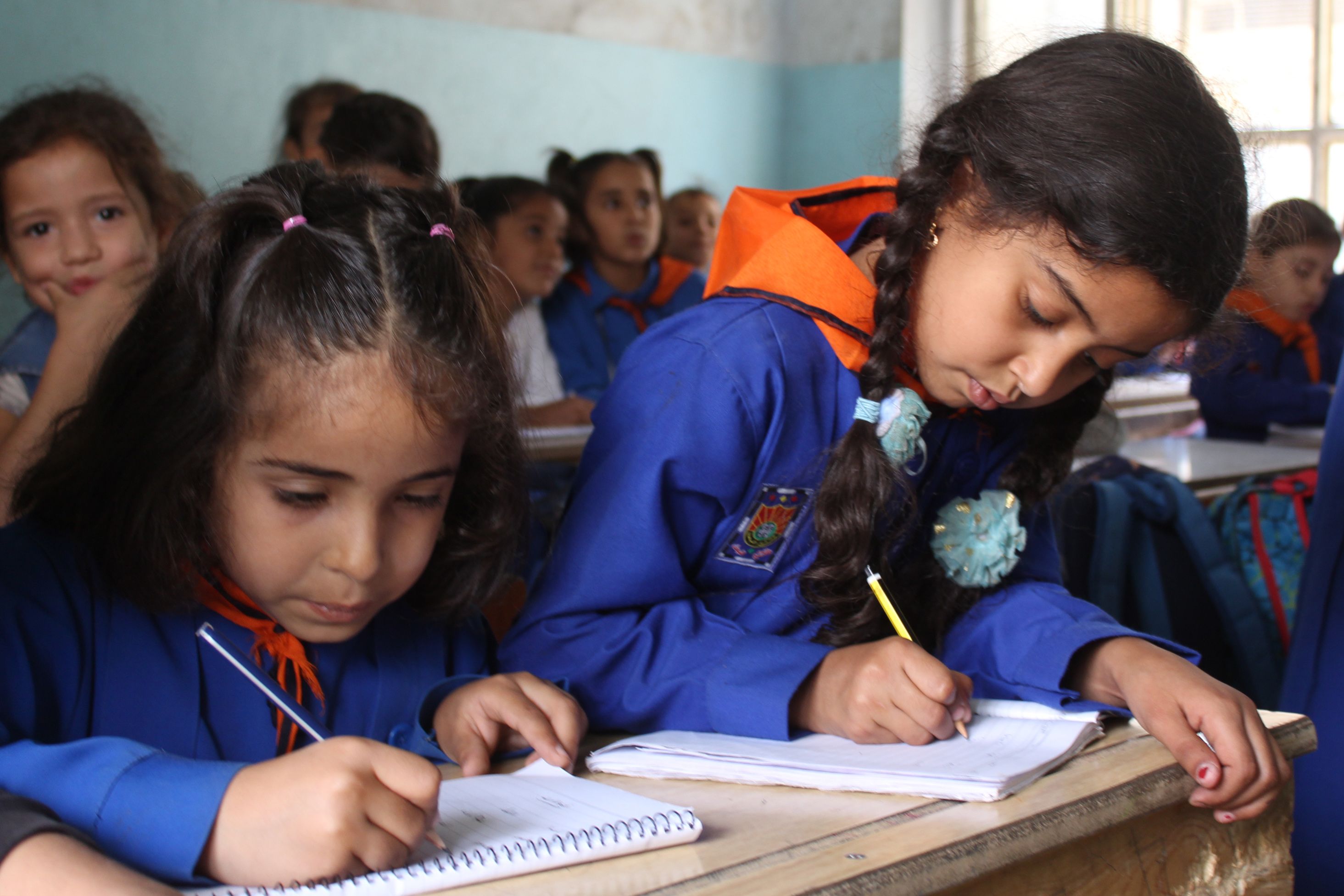Syrian parents spurn Kurdish schools over university fears
QAMISHLI - After carefully packing her schoolbag, seven-year-old Rasha scrambles into the van that shuttles her daily from her home in a Kurdish-held neighbourhood of Syria's Qamishli to school in the government-held enclave.
Many parents in northeastern Syria, most of which is controlled by Kurdish authorities, are opting to enrol their children in overcrowded state-run schools despite the complex commute.
The defections reflect the broader fissures in the northeast between those supporting formal state institutions and those defending parallel bodies developed by the Kurds.
Parents say they prefer their children to study the government curriculum than enrol in the independent system rolled out in recent years by Kurdish authorities.
Rasha is one of those pupils.
"It's a huge responsibility and an added expense," says her father, a retired school teacher, of the longer daily journey across the divided city.
She used to attend class closer to home, but since Kurdish authorities introduced their own curriculum, Rasha transferred to a school in a government-held district of Qamishli.
With many parents making similar decisions, government-operated schools have introduced two shifts per day to accommodate the influx.
"Many of the recreational activities like music, drawing and recess were cancelled because of the huge number of pupils," says Rasha's father.
"The two sides should reach a solution and not leave our children to this uncertain future."
Kurds hold most of Syria's northeast, including territory they captured from the Islamic State group as well as areas from which government forces withdrew early in the seven-year war.
Over the years, they have painstakingly developed their own autonomous administration to run public services and the police.
'Where could they go?'
In 2016, Kurdish authorities began introducing a new curriculum in areas under their control, offering schooling in Kurdish and other minority languages, and teaching Kurdish history.
They cracked down on schools that resisted the new syllabus, briefly closing more than a dozen this year that stuck to the state one.
So far, the Kurdish curriculum has been rolled out for some 210,000 pupils in around 2,200 schools, education commission official Samira Haj Ali said.
But since those schools are not state-accredited, their diplomas are recognised only at the Kurdish-run Rojava University and Kobane University, founded two years ago.
That, for parents and students, is the sticking point.
"We're not against learning in Kurdish, we want it for our kids," says Ezzedine Amin, a 39-year-old taxi driver in Qamishli whose children attend government schools.
"But the diplomas offered by the autonomous administration aren't recognised elsewhere. If my kids graduate with that degree, where could they go?"
As he speaks, class finishes. Girls dressed in shades of pink and boys in blue stream into the car park to head home.
Fatima Khalil Asaad, a 45-year-old teacher at the government-run Saleh Abdi school, says classrooms are overcrowded.
"There are no more desks for students to sit at," says Asaad, her hair wrapped in a bright pink headscarf.
A tricky ride
"Pupils come from other towns, like Amuda, Derbasiyeh, and Ras al-Ain, because the state curriculum is only taught in Qamishli and Hasakeh," says Asaad.
Both cities have enclaves still held by government troops and allied militia where the state institutions run from Damascus continue to function.
The school run from surrounding towns can be as much as 115 kilometres (70 miles) in each direction.
Out of some 2,500 schools across the northeast, slightly more than 400 are still teaching the state curriculum, according to 2017 figures from the government-run education directorate.
Around 101,000 pupils are enrolled in the schools in government-held areas of Qamishli and Hasakeh and their surroundings.
In Hasakeh, pick-up trucks and worn-down vans whisk students past cement barriers painted to resemble the tricolour government flag, into the government-held quarter.
Here, too, schools are overwhelmed.
"The schools can't absorb more than 200 pupils each, and right now the numbers are at more than 1,000," says Vivian, the 38-year-old director of one state-run institute.
Classrooms with a capacity of 40 students are crammed with more than 85, and numbers are still rising.
"Despite the obstacles of transport and other issues, people really want to educate their children," she says.
Aya, 12, says she treks to school from her house on the city's edges.
"I came to learn in government schools because then I can go study in university," she says.
The ride to school has been complicated by a recent ban by Kurdish authorities on taxi and bus drivers using their vehicles for school transport.
But Abu Abdallah, who drives pupils from Kurdish-held zones into government areas every day in his small truck, creatively circumvents the ruling.
"Sometimes we drop off the pupils before the checkpoint so they walk, then pick them up after we cross," he says.
"These pupils just want to learn."



